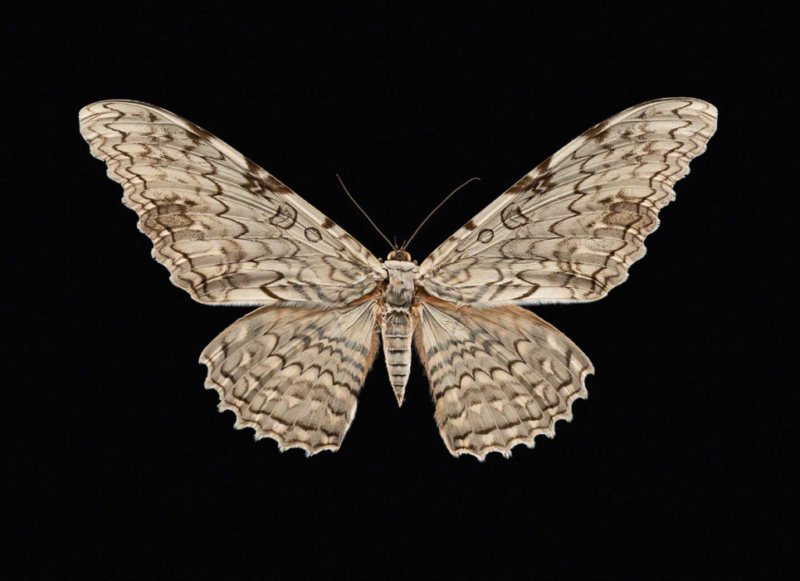Butterflies are graceful and charming creatures that do not leave anyone indifferent. The sizes of these insects range from very tiny to truly gigantic. What is the name of the largest butterfly in the world where it lives and what does a person know about this miracle of nature? Learn from this article.
Material Content:
Description and size of the butterfly Tizania Agrippina
Tizania Agrippina (Thysania agrippina) - a butterfly, striking in its size. These insects belong to the family Scoop. They, in turn, are part of the Erebida family.
Agrippina is recognized as the largest butterfly on the planet, because its wingspan reaches 30 cm, and the body length is comparable to the size of a person’s thumb. The most impressive representative of this family was discovered in 1934 in Brazil. By the size of the wingspan, the scoop left behind (though not by much) even the Peacock-eye Atlas, which also claimed the title of the largest butterfly.
The upper and lower wings of the scoops are wavy at the edges. In their upper part, as well as on the body, numerous bands are observed - brown, gray, brownish. Individuals of this family can be distinguished from each other by color, for example, a brown tint prevail over white and be brighter than other relatives. The lower part of the body of a brownish tone with the presence of white spots can give a metallic sheen or be matte. In males, the color on the back of the wings is purple.
Insect habitat
The largest butterfly in the world lives in America, mainly in the southern states.However, over time, due to climate change, these insects emigrated to Mexico and the tropical forests of central America. Today they are often met in the humid conditions of the selva - the rainy forests of South America.
The world's largest butterfly lifestyle
The giant scoop is considered not only one of the largest, but also the most mysterious insects living on Earth. So, the way of life of these butterflies is little studied by man, and the amount of information about them is rather scarce.
It is assumed that the caterpillars of the Erebida family feed on the leaves of plants of the genus legume and cassia. The peculiar coloring of the scoop helps it disguise itself under the bark of trees. However, it is rare to see this insect during the day. Butterfly activity occurs at night.
Almost nothing is known more about Agrippin - the authorities of many American countries are jealously guarding this peculiar national treasure. If a person is lucky enough to meet a giant butterfly, it is best to watch it from afar - these creatures are on the verge of extinction.
Propagation and nutrition of the Erebida family
Reproduction of insects of the Erebida family, of which Agrippina is a scoop, is not much different from the same process that occurs in other butterflies. Females lay eggs on the underside of leaves or stems of last year's grass, in some cases in the ground. Each butterfly is capable of laying from 500 to 2,000 eggs, their number is largely due to the quality of insect nutrition.
The embryo develops within 5-10 days, approximately in May-June the first generation of caterpillars appears. They pupate in the soil, and after a while the second generation of butterflies appears. The individuals will grow and, in turn, will also lay eggs in late summer or early fall.
Interesting Facts
Despite the fact that Titania Agrippina is a rather secretive butterfly, naturalists and simply wildlife lovers managed to find out a few interesting facts about her:
- Agrippin's scoop has taken a leading position in the list of giant butterflies due to its wingspan. But on this parameter, she left behind her main rival - Peacock-eye Atlas.
- The average wingspan of a scoop, according to various sources, is 25-31 cm. However, according to official statements, the largest specimens of these insects were caught twice. This was first noted in Costa Rica, and measurements of the wingspan of the scoop showed a result of 28.6 cm. The second giant butterfly was found in Brazil, the same parameter reached 29.8 centimeters.
- The scoop knows how to truly camouflage itself: the color of its wings resembles the bark of a tree so much that it is very close to pass an insect and not notice it quite easily.
- In some states of Brazil, the scoop is prohibited, these butterflies are protected by the law as an endangered species.
Tizania Agrippina - a unique insect. Seeing it once, a person is unlikely to be able to forget this huge, by the standards of ordinary butterflies, creation. The impressive wingspan and unusual coloring make the huge scoop record holder, ranking first in size among similar winged individuals.














